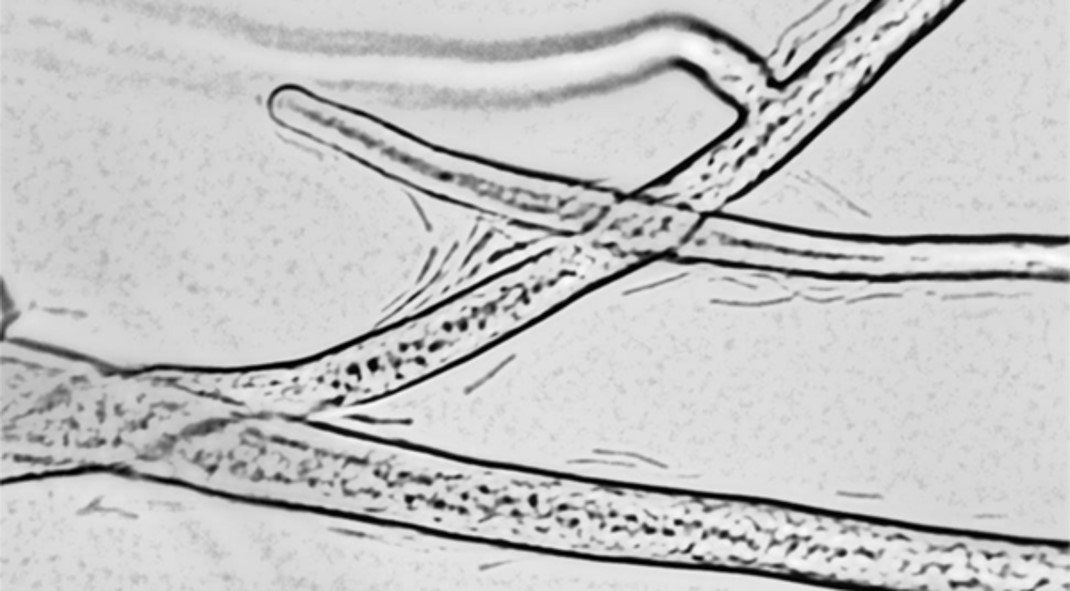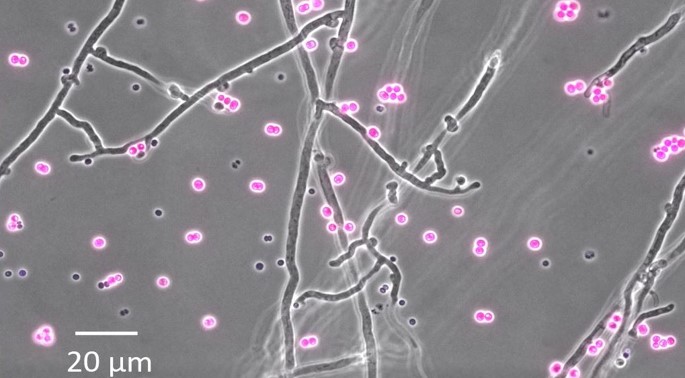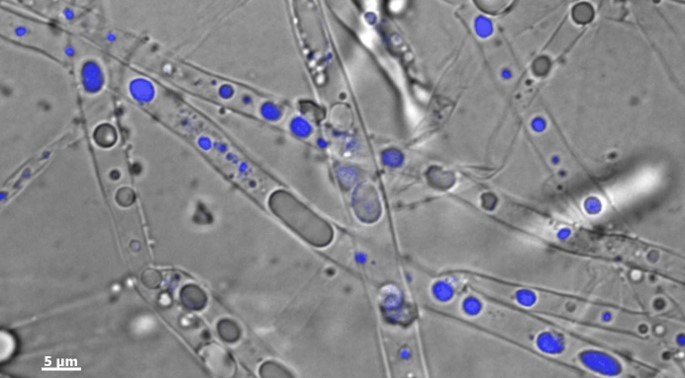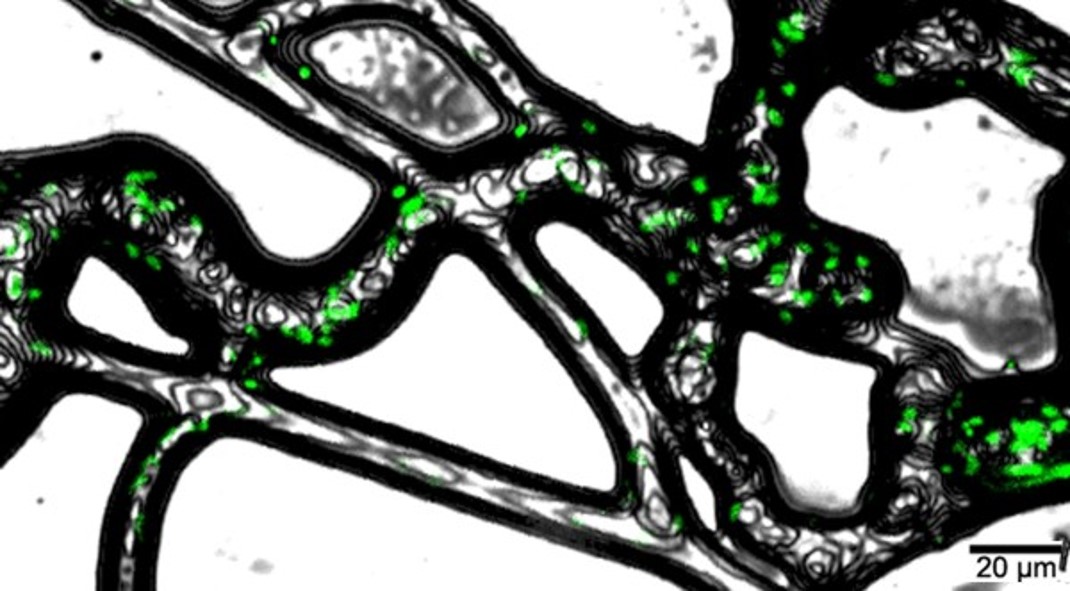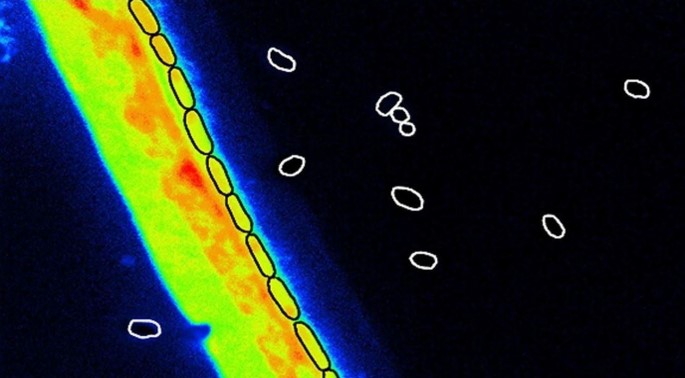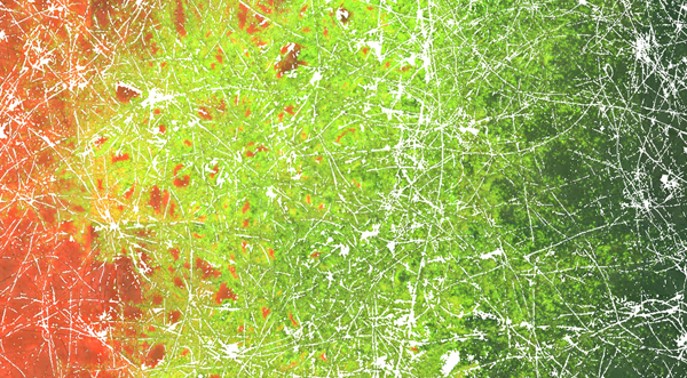Bioavailability
Value Statement
We research the chemodynamics and microbial ecology of contaminant biotransformation for improved management of the ecosystem service of contaminant degradation in natural and built environments.
Research Topics
Process-based description of the biotransformation and chemodynamics of organic contaminants in natural and built environments including:
- Ecology and bioavailability of contaminant biotransformation: Chemodynamics and microbial (bacterial/ phage) dispersal ecology for improved biotransformation and nutrient cycling .
- Mycosphere ecology (mycoremediation): ecology of contaminant biotransformation in the mycosphere; mycoremediation based on bacterial activation and dispersal by fungi (‘fungal highways’).
- Prediction of soil microbial pesticide degradation potential at the field scale: Combining proximal and remote sensing techniques with microbial activity analysis.
- Electrokinetics and electro-bioremediation: Use of electrokinetic approaches on the clean-up of contaminated matrices and water.
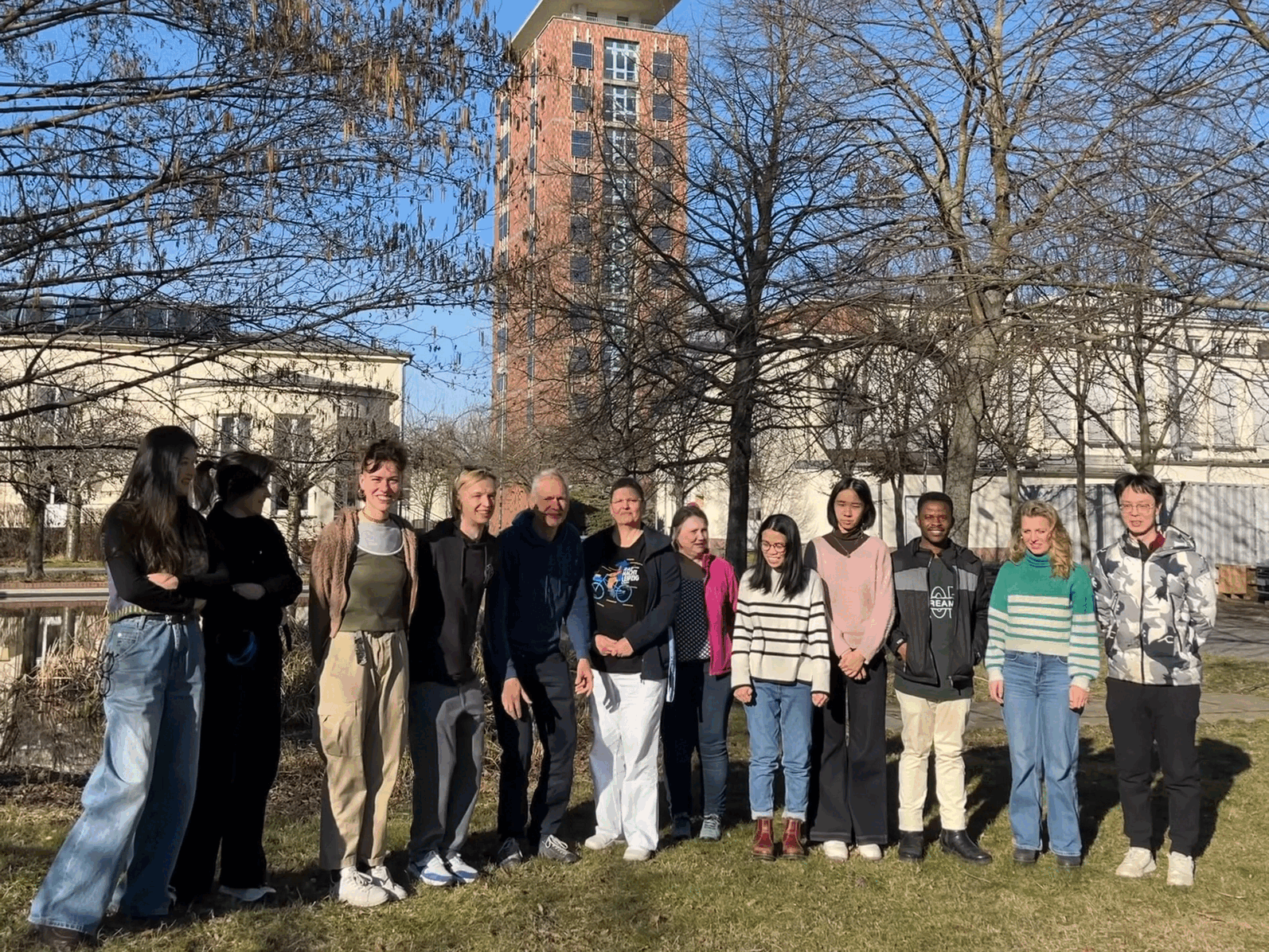
Technicians
Jana ReichenbachBirgit Würz
BA & MA Students
Melihcan Aydemir \ ErasmusAlan Cong Zhou \ TU Munich
Johannes Carstensen \ TU Hamburg
- Characterization of physico-chemical surfaces properties of bacteria and fungal mycelia (contact angle, surface charge, biosurfactant production)
- GC-based stable isotope approaches for the assessment of substrate bioavailability to single cells and microbial communities
- Quantification of bacterial chemotaxis, degradation kinetics and deposition rates to surfaces
- Computer-based visualisation and quantification of bacterial motility and dispersal
- Chemical analytical techniques and laboratory model-systems permitting for full control of experimental variables and bioavailable substrate fluxes
- Electrokinetic and fungus-based dispersal of bacteria and chemicals in porous media
- 2021-2027: Tapping nature’s potential for sustainable production and a healthy environment – towards a waste-minimized sustainable bioeconomy (TapNature).
- 2021-2025: Phages as vectors and indicators of biological information in the Earth‘s Critical Zone: Deutsche Forschungs Gemeinschaft - Collaborative Research Centre AquaDiva (CRC AquaDiva (AquaDiva): AquaDiva
- 2020-2024: Electric field effects on sorption and microbial degradation of waterborne (urban) contaminants.
- 2022-2026: Fungi as drivres of pesticide biodegradation and water retention in soil.
- 2024-2028: FAIRification of multiOmics data to link databases and create knowledge graphs for fermented foods (FAIROmics); HORIZON-MSCA-2022-DN-01-01.
- 2024-2027: Exploring ecology-based approaches for improved soil remediation using spent oyster mushroom substrates (PLEUROREM), Bundesministerium für Bildung und Forschung (BMBF).
- 2022-2025: Constructing and validating mycosphere Ecosystems for efficient biodegradation of water-borne Contaminants (MycoDeg).
Index:
- 2025 (2)
- 2024 (9)
- 2023 (5)
- 2022 (12)
- 2021 (7)
- 2020 (3)
- 2019 (5)
- 2018 (13)
- 2017 (15)
- 2016 (10)
- 2015 (10)
- 2014 (7)
- 2013 (9)
- 2012 (14)
- 2011 (7)
- 2010 (14)
You could use our publication index for further requests.
2025 (2)
- Anuforo, P.C., Würz, B., Wick, L.Y., Kallies, R. (2025):
Draft genome sequences of Pseudomonas chengduensis strain BW1 and Sphingobium sp. strain MK2 isolated from oil sands process-affected water
Microbiol. Resour. Ann. 14 (2), e00677-24 10.1128/mra.00677-24 - Wick, L.Y. (2025):
Rebuttal to correspondence on "DC electric fields promote biodegradation of waterborne naphthalene in biofilter systems"
Environ. Sci. Technol. 59 (40), 21761 - 21762 10.1021/acs.est.5c12499
2024 (9)
- Acuña, J.J., Rilling, J.I., Inostroza, N.G., Zhang, Q., Wick, L.Y., Sessitsch, A., Jorquera, M.A. (2024):
Variovorax sp. strain P1R9 applied individually or as part of bacterial consortia enhances wheat germination under salt stress conditions
Sci. Rep. 14 , art. 2070 10.1038/s41598-024-52535-0 - Balseiro-Romero, M., Wick, L.Y., Vila, J., Grifoll, M., Ortega-Calvo, J.J. (2024):
Drivers for efficient bioaugmentation and clean-up of contaminated soil
In: Ortega-Calvo, J.J., Coulon, F. (eds.)
Soil remediation science and technology
Handbook of Environmental Chemistry Series 130
Springer, Berlin, Heidelberg, p. 261 - 291 10.1007/698_2023_1064 - Gonzalez-Gonzalez, S., Zhang, Q., Acuña, J.J., Sadowsky, M.J., Wick, L.Y., Jorquera, M.A. (2024):
Mycelia migratory bacteria in compost and compost–amended rhizosphere soil in a table grape orchard
J. Soil Sci. Plant Nutr. 24 (3), 4666 - 4680 10.1007/s42729-024-01862-2 - He, J., Castilla Alcantara, J.C., Ortega-Calvo, J.J., Harms, H., Wick, L.Y. (2024):
DC electric fields promote biodegradation of waterborne naphthalene in biofilter systems
Environ. Sci. Technol. 58 (41), 18234 - 18243 10.1021/acs.est.4c02924 - Moeller, L., Knapp, S., Schmauck, S., Otto, P., Schlosser, D., Wick, L.Y., Georgi, A., Friesen, J., Ueberham, M., Trabitzsch, R., Wollschläger, N., Schlink, U., Hofmann, D., Müller, R.A., Mackenzie, K. (2024):
Gründächer im urbanen Raum und ihre Ökosystemleistungen
In: Kabisch, S., Rink, D., Banzhaf, E. (Hrsg.)
Die resiliente Stadt: Konzepte, Konflikte, Lösungen
Springer Spektrum, Berlin, Heidelberg, S. 165 - 180 10.1007/978-3-662-66916-7_11 - Périat, C., Kuhn, T., Buffi, M., Corona-Ramirez, A., Fatton, M., Cailleau, G., Chain, P.S., Stanley, C.E., Wick, L.Y., Bindschedler, S., Gonzalez, D., Li Richter, X.-Y., Junier, P. (2024):
Host and nonhost bacteria support bacteriophage dissemination along mycelia and abiotic dispersal networks
microLife 5 , uqae004 10.1093/femsml/uqae004 - Shan, Y., Hao, H., Yin, Y., Hu, N., Zhan, M., Ma, D., Yin, Y., Jiao, W., Wick, L.Y. (2024):
Effects of temperature and DC electric fields on perfluorooctanoic acid sorption kinetics to activated carbon
Environ. Sci. Technol. 58 (13), 5987 - 5995 10.1021/acs.est.3c10590 - Shan, Y., Yin, Y., Wei, J., Ma, D., Zhan, M., Yin, Y., Yang, L., Jiao, W., Wick, L.Y. (2024):
Mechanisms of heating-electrokinetic co-driven perfluorooctanoic acid (PFOA) adsorption on zeolite
J. Environ. Sci. 146 , 264 - 271 10.1016/j.jes.2023.10.024 - Vuilleumier, S., Barthelmebs, L., Corcoll, N., Hery, M., Karpouzas, D.G., Wick, L.Y. (2024):
Editorial: thematic issue on microbial ecotoxicology
FEMS Microbiol. Ecol. 100 (8), fiae097 10.1093/femsec/fiae097
2023 (5)
- Álvarez-Barragán, J., Cravo-Laureau, C., Xiong, B., Wick, L.Y., Duran, R. (2023):
Marine fungi select and transport aerobic and anaerobic bacterial populations from polycyclic aromatic hydrocarbon-contaminated sediments
mBio 14 (2), e02761-22 10.1128/mbio.02761-22 - Buffi, M., Cailleau, G., Kuhn, T., Li Richter, X.-Y., Stanley, C.E., Wick, L.Y., Chain, P.S., Bindschedler, S., Junier, P. (2023):
Fungal drops: a novel approach for macro- and microscopic analyses of fungal mycelial growth
microLife 4 , uqad042 10.1093/femsml/uqad042 - Escher, B.I., Altenburger, R., Blüher, M., Colbourne, J.K., Ebinghaus, R., Fantke, P., Hein, M., Köck, W., Kümmerer, K., Leipold, S., Li, X., Scheringer, M., Scholz, S., Schloter, M., Schweizer, P.-J., Tal, T., Tetko, I., Traidl-Hoffmann, C., Wick, L.Y., Fenner, K. (2023):
Modernizing persistence–bioaccumulation–toxicity (PBT) assessment with high throughput animal-free methods
Arch. Toxicol. 97 (5), 1267 - 1283 10.1007/s00204-023-03485-5 - Khan, N., Muge, E., Mulaa, F.J., Wamalwa, B., von Bergen, M., Jehmlich, N., Wick, L.Y. (2023):
Mycelial nutrient transfer promotes bacterial co-metabolic organochlorine pesticide degradation in nutrient-deprived environments
ISME J. 17 (4), 570 - 578 10.1038/s41396-023-01371-7 - Wick, L.Y. (2023):
Pilze als Beweger und Gestalter im Untergrund [Fungi as movers and designers in the underground]
Biospektrum 29 (7), 725 - 727 10.1007/s12268-023-2041-5
2022 (12)
- Jensen Pedersen, K., Haange, S.-B., Žížalová, K., Viehof, A., Clavel, T., Leniček, M., Engelmann, B., Wick, L.Y., Schaap, F.G., Jehmlich, N., Rolle-Kampczyk, U., von Bergen, M. (2022):
Eggerthella lenta DSM 2243 alleviates bile acid stress response in Clostridium ramosum and Anaerostipes caccae by transformation of bile acids
Microorganisms 10 (10), art. 2025 10.3390/microorganisms10102025 - Karagulyan, M., Goebel, M.-O., Diehl, D., Abu Quba, A.A., Kästner, M., Bachmann, J., Wick, L.Y., Schaumann, G.E., Miltner, A. (2022):
Water stress-driven changes in bacterial cell surface properties
Appl. Environ. Microb. 88 (21), e00732-22 10.1128/aem.00732-22 - Khan, A.M., Gharasoo, M., Wick, L.Y., Thullner, M. (2022):
Phase-specific stable isotope fractionation effects during combined gas-liquid phase exchange and biodegradation
Environ. Pollut. 309 , art. 119737 10.1016/j.envpol.2022.119737 - Khan, N., Brizola Toscan, R., Lunayo, A., Wamalwa, B., Muge, E., Mulaa, F.J., Kallies, R., Harms, H., Wick, L.Y., Nunes da Rocha, U. (2022):
Draft genome sequences of two Sphingobium species associated with hexachlorocyclohexane (HCH) degradation isolated from an HCH-contaminated soil
Microbiol. Resour. Ann. 11 (3), e00886-21 10.1128/mra.00886-21 - Kuhn, T., Buffi, M., Bindschedler, S., Chain, P.S., Gonzalez, D., Stanley, C.E., Wick, L.Y., Junier, P., Li Richter, X.-Y. (2022):
Design and construction of 3D printed devices to investigate active and passive bacterial dispersal on hydrated surfaces
BMC Biol. 20 , art. 203 10.1186/s12915-022-01406-z - Scholz, S., Brack, W., Escher, B.I., Hackermüller, J., Liess, M., von Bergen, M., Wick, L.Y., Zenclussen, A.C., Altenburger, R. (2022):
The EU chemicals strategy for sustainability: an opportunity to develop new approaches for hazard and risk assessment
Arch. Toxicol. 96 (8), 2381 - 2386 10.1007/s00204-022-03313-2 - Xiong, B.-J., Kleinsteuber, S., Sträuber, H., Dusny, C., Harms, H., Wick, L.Y. (2022):
Impact of fungal hyphae on growth and dispersal of obligate anaerobic bacteria in aerated habitats
mBio 13 (3), e00769-22 10.1128/mbio.00769-22 - Xiong, B.-J., Stanley, C.E., Dusny, C., Schlosser, D., Harms, H., Wick, L.Y. (2022):
pH distribution along growing fungal hyphae at microscale
J. Fungi 8 (6), art. 599 10.3390/jof8060599 - You, X., Kallies, R., Hild, K., Hildebrandt, A., Harms, H., Chatzinotas, A., Wick, L.Y. (2022):
Transport of marine tracer phage particles in soil
Sci. Total Environ. 814 , art. 152704 10.1016/j.scitotenv.2021.152704 - You, X., Kallies, R., Kühn, I., Schmidt, M., Harms, H., Chatzinotas, A., Wick, L.Y. (2022):
Phage co-transport with hyphal-riding bacteria fuels bacterial invasion in a water-unsaturated microbial model system
ISME J. 16 (5), 1275 - 1283 10.1038/s41396-021-01155-x - You, X., Klose, N., Kallies, R., Harms, H., Chatzinotas, A., Wick, L.Y. (2022):
Mycelia-assisted isolation of non-host bacteria able to co-transport phages
Viruses 14 (2), art. 195 10.3390/v14020195 - Zhou, J., Saeidi, N., Wick, L.Y., Xie, Y., Kopinke, F.-D., Georgi, A. (2022):
Efficient removal of trifluoroacetic acid from water using surface-modified activated carbon and electro-assisted desorption
J. Hazard. Mater. 436 , art. 129051 10.1016/j.jhazmat.2022.129051
2021 (7)
- Álvarez-Barragán, J., Cravo-Laureau, C., Wick, L.Y., Duran, R. (2021):
Fungi in PAH-contaminated marine sediments: Cultivable diversity and tolerance capacity towards PAH
Mar. Pollut. Bull. 164 , art. 112082 10.1016/j.marpolbul.2021.112082 - Calabrese, F., Stryhanyuk, H., Moraru, C., Schlömann, M., Wick, L.Y., Richnow, H.H., Musat, F., Musat, N. (2021):
Metabolic history and metabolic fitness as drivers of anabolic heterogeneity in isogenic microbial populations
Environ. Microbiol. 23 (11), 6764 - 6776 10.1111/1462-2920.15756 - González-González, S., Astorga-Eló, M., Campos, M., Wick, L.Y., Acuña, J.J., Jorquera, M.A. (2021):
Compost fungi allow for effective dispersal of putative PGP bacteria
Agronomy-Basel 11 (8), art. 1567 10.3390/agronomy11081567 - Khan, N., Brizola Toscan, R., Lunayo, A., Wamalwa, B., Muge, E., Mulaa, F.J., Kallies, R., Harms, H., Wick, L.Y., Nunes da Rocha, U. (2021):
Draft genome sequence of Fusarium equiseti K3, a fungal species isolated from hexachlorocyclohexane-contaminated soil
Microbiol. Resour. Ann. 10 (47), e00885-21 10.1128/MRA.00885-21 - Wick, L.Y. (2021):
Buchrezension zu: Umweltmikrobiologie (Walter Reineke und Michael Schlömann), 647 S., 335 Abb., Springer, 2020, 3. Aufl., SC, 44,99 €, ISBN: 9783662596548
Biospektrum 27 (2), 218 10.1007/s12268-021-1522-8 - Xiong, B.-J., Dusny, C., Wang, L., Appel, J., Lindstaedt, K., Schlosser, D., Harms, H., Wick, L. (2021):
Illuminate the hidden: in vivo mapping of microscale pH in the mycosphere using a novel whole-cell biosensor
ISME Commun. 1 , art. 75 10.1038/s43705-021-00075-3 - Zhou, J., Saeidi, N., Wick, L.Y., Kopinke, F.-D., Georgi, A. (2021):
Adsorption of polar and ionic organic compounds on activated carbon: Surface chemistry matters
Sci. Total Environ. 794 , art. 148508 10.1016/j.scitotenv.2021.148508
2020 (3)
- Shan, Y., Liu, L., Liu, Y., Harms, H., Wick, L.Y. (2020):
Effects of electrokinetic phenomena on bacterial deposition monitored by quartz crystal microbalance with dissipation monitoring
Environ. Sci. Technol. 54 (21), 14036 - 14045 10.1021/acs.est.0c04347 - Shan, Y., Qin, J., Harms, H., Wick, L.Y. (2020):
Electrokinetic effects on the interaction of phenanthrene with geo-sorbents
Chemosphere 242 , art. 125161 10.1016/j.chemosphere.2019.125161 - Wick, L.Y. (2020):
Bioavailability as a microbial system property: lessons learned from biodegradation in the mycosphere
In: Ortega-Calvo, J.-J., Parsons, J.R. (eds.)
Bioavailability of organic chemicals in soil and sediment
Handbook of Environmental Chemistry Series 100
Springer, Berlin, Heidelberg, p. 267 - 289 10.1007/698_2020_568
2019 (5)
- Calabrese, F., Voloshynovska, I., Musat, F., Thullner, M., Schlömann, M., Richnow, H.H., Lambrecht, J., Müller, S., Wick, L.Y., Musat, N., Stryhanyuk, H. (2019):
Quantitation and comparison of phenotypic heterogeneity among single cells of monoclonal microbial populations
Front. Microbiol. 10 , art. 2814 10.3389/fmicb.2019.02814 - Ghanem, N., Stanley, C.E., Harms, H., Chatzinotas, A., Wick, L.Y. (2019):
Mycelial effects on phage retention during transport in a microfluidic platform
Environ. Sci. Technol. 53 (20), 11755 - 11763 10.1021/acs.est.9b03502 - Kallies, R., Kiesel, B., Schmidt, M., Ghanem, N., Zopfi, J., Hackermüller, J., Harms, H., Wick, L.Y., Chatzinotas, A. (2019):
Complete genome sequence of Pseudoalteromonas virus vB_PspP-H6/1 that infects Pseudoalteromonas sp. strain H6
Mar. Genom. 47 , art. 100667 10.1016/j.margen.2019.03.002 - Schmidt, R., Ulanova, D., Wick, L.Y., Bode, H.B., Garbeva, P. (2019):
Microbe-driven chemical ecology: past, present and future
ISME J. 13 (11), 2656 - 2663 10.1038/s41396-019-0469-x - Wick, L.Y., Chatzinotas, A. (2019):
Capacity of ecosystems to degrade anthropogenic chemicals
In: Schröter, M., Bonn, A., Klotz, S., Seppelt, R., Baessler, C. (eds.)
Atlas of ecosystem services : drivers, risks, and societal responses
Springer International Publishing, Cham, p. 179 - 182 10.1007/978-3-319-96229-0_28
2018 (13)
- Concha, E., Heipieper, H.J., Wick, L.Y., Ciudad, G.A., Navia, R. (2018):
Effects of limonene, n-decane and n-decanol on growth and membrane fatty acid composition of the microalga Botryococcus braunii
AMB Express 8 (1), art. 189 10.1186/s13568-018-0718-9 - Deveau, A., Bonito, G., Uehling, J., Paoletti, M., Becker, M., Bindschedler, S., Hacquard, S., Hervé, V., Labbé, J., Lastovetsky, O.A., Mieszkin, S., Millet, L.J., Vajna, B., Junier, P., Bonfante, P., Krom, B.P., Olsson, S., van Elsas, J.D., Wick, L.Y. (2018):
Bacterial–fungal interactions: ecology, mechanisms and challenges
FEMS Microbiol. Rev. 42 (3), 335 - 352 10.1093/femsre/fuy008 - Ghanem, N., Trost, M., Sanchez Fontanet, L., Harms, H., Chatzinotas, A., Wick, L.Y. (2018):
Changes of the specific infectivity of tracer phages during transport in porous media
Environ. Sci. Technol. 52 (6), 3486 - 3492 10.1021/acs.est.7b06271 - Harms, H., Smith, K.E.C., Wick, L.Y. (2018):
Problems of hydrophobicity/bioavailability: an introduction
In: Krell, T. (ed.)
Cellular ecophysiology of microbe: Hydrocarbon and lipid interactions
Handbook of Hydrocarbon and Lipid Microbiology
Springer International Publishing, Cham, p. 3 - 15 10.1007/978-3-319-20796-4_38-1 - Harms, H., Wick, L.Y., Smith, K.E.C. (2018):
Matrix - hydrophobic compound interactions
In: Krell, T. (ed.)
Cellular ecophysiology of microbe: Hydrocarbon and lipid interactions
Handbook of Hydrocarbon and Lipid Microbiology
Springer International Publishing, Cham, p. 33 - 45 10.1007/978-3-319-20796-4_39-1 - Jimenez-Sanchez, C., Wick, L.Y., Ortega-Calvo, J.-J. (2018):
Impact of chemoeffectors on bacterial motility, transport, and contaminant degradation in sand-filled percolation columns
Environ. Sci. Technol. 52 (18), 10673 - 10679 10.1021/acs.est.8b02370 - Khan, A.M., Wick, L.Y., Thullner, M. (2018):
Applying the Rayleigh approach for stable isotope-based analysis of VOC biodegradation in diffusion-dominated systems
Environ. Sci. Technol. 52 (14), 7785 - 7795 10.1021/acs.est.8b01757 - König, S., Worrich, A., Banitz, T., Centler, F., Harms, H., Kästner, M., Miltner, A., Wick, L.Y., Thullner, M., Frank, K. (2018):
Spatiotemporal disturbance characteristics determine functional stability and collapse risk of simulated microbial ecosystems
Sci. Rep. 8 , art. 9488 10.1038/s41598-018-27785-4 - König, S., Worrich, A., Banitz, T., Harms, H., Kästner, M., Miltner, A., Wick, L.Y., Frank, K., Thullner, M., Centler, F. (2018):
Functional resistance to recurrent spatially heterogeneous disturbances is facilitated by increased activity of surviving bacteria in a virtual ecosystem
Front. Microbiol. 9 , art. 734 10.3389/fmicb.2018.00734 - Shan, Y., Harms, H., Wick, L.Y. (2018):
Electric field effects on bacterial deposition and transport in porous media
Environ. Sci. Technol. 52 (24), 14294 - 14301 10.1021/acs.est.8b03648 - Wick, L.Y., Harms, H. (2018):
The mycosphere as a hotspot for the biotransformation of contaminants in soil
In: Krell, T. (ed.)
Cellular ecophysiology of microbe: Hydrocarbon and lipid interactions
Handbook of Hydrocarbon and Lipid Microbiology
Springer International Publishing, Cham, p. 315 - 324 10.1007/978-3-319-20796-4_36-1 - Wick, L.Y., Harms, H., Smith, K.E.C. (2018):
Microorganism-hydrophobic compound interactions
In: Krell, T. (ed.)
Cellular ecophysiology of microbe: Hydrocarbon and lipid interactions
Handbook of Hydrocarbon and Lipid Microbiology
Springer International Publishing, Cham, p. 17 - 31 10.1007/978-3-319-20796-4_40-1 - Worrich, A., Wick, L.Y., Banitz, T. (2018):
Ecology of contaminant biotransformation in the mycosphere: Role of transport processes
In: Gadd, G.M., Sariaslani, S. (eds.)
Advances in Applied Microbiology 104
Elsevier, Oxford, p. 93 - 133 10.1016/bs.aambs.2018.05.005
2017 (15)
- Guo, Y., Stärk, H.J., Hause, G., Schmidt, M., Harms, H., Wick, L.Y., Müller, S. (2017):
Heterogenic response of prokaryotes toward silver nanoparticles and ions is facilitated by phenotypes and attachment of silver aggregates to cell surfaces
Cytom. Part A 91 (8), 775 - 784 10.1002/cyto.a.23055 - Harms, H., Wick, L.Y. (2017):
Determining the tendency of microorganisms to interact with hydrocarbon phases
In: McGenity, T.J., Timmis, K.N., Nogales, B. (eds.)
Hydrocarbon and lipid microbiology protocols. Activities and phenotypes
Springer Protocols Handbooks
Springer, Berlin, Heidelberg, p. 43 - 53 10.1007/8623_2015_77 - Harms, H., Wick, L.Y., Schlosser, D. (2017):
The fungal community in organically polluted systems
In: Dighton, J., White, J.F. (eds.)
The fungal community: Its organization and role in the ecosystem
Mycology Series 32
CRC Press / Taylor & Francis, Boca Raton, FL, p. 459 - 469 - Inostroza, N.G., Barra, P.J., Wick, L.Y., Mora, M.L., Jorquera, M.A. (2017):
Effect of rhizobacterial consortia from undisturbed arid- and agro-ecosystems on wheat growth under different conditions
Lett. Appl. Microbiol. 64 (2), 158 - 163 10.1111/lam.12697 - Kallies, R., Kiesel, B., Schmidt, M., Kacza, J., Ghanem, N., Narr, A., Zopfi, J., Wick, L.Y., Hackermüller, J., Harms, H., Chatzinotas, A. (2017):
Complete genome sequence of Pseudoalteromonas phage vB_PspS-H40/1 (formerly H40/1) that infects Pseudoalteromonas sp. strain H40 and is used as biological tracer in hydrological transport studies
Stand. Genomic Sci. 12 , art. 20 10.1186/s40793-017-0235-5 - Kallies, R., Kiesel, B., Zopfi, J., Wick, L.Y., Chatzinotas, A. (2017):
Complete genome sequence of Alteromonas virus vB_AspP-H4/4
Genome Announc. 5 (43), e00914-17 10.1128/genomeA.00914-17 - König, S., Worrich, A., Centler, F., Wick, L.Y., Miltner, A., Kästner, M., Thullner, M., Frank, K., Banitz, T. (2017):
Modelling functional resilience of microbial ecosystems: Analysis of governing processes
Environ. Modell. Softw. 89 , 31 - 39 10.1016/j.envsoft.2016.11.025 - Liang, X., Guo, C., Liao, C., Liu, S., Wick, L.Y., Peng, D., Yi, X., Lu, G., Yin, H., Dang, Z. (2017):
Drivers and applications of integrated clean-up technologies for surfactant-enhanced remediation of environments contaminated with polycyclic aromatic hydrocarbons (PAHs)
Environ. Pollut. 225 , 129 - 140 10.1016/j.envpol.2017.03.045 - Narr, A., Nawaz, A., Wick, L.Y., Harms, H., Chatzinotas, A. (2017):
Soil viral communities vary temporally and along a land use transect as revealed by virus-like particle counting and a modified community fingerprinting approach (fRAPD)
Front. Microbiol. 8 , art. 1975 10.3389/fmicb.2017.01975 - Otto, S., Bruni, E.P., Harms, H., Wick, L.Y. (2017):
Catch me if you can: dispersal and foraging of Bdellovibrio bacteriovorus 109J along mycelia
ISME J. 11 (2), 386 - 393 10.1038/ismej.2016.135 - Otto, S., Harms, H., Wick, L.Y. (2017):
Effects of predation and dispersal on bacterial abundance and contaminant biodegradation
FEMS Microbiol. Ecol. 93 (2), fiw241 10.1093/femsec/fiw241 - Pronk, G.J., Heister, K., Vogel, C., Babin, D., Bachmann, J., Ding, G.-C., Ditterich, F., Gerzabek, M.H., Giebler, J., Hemkemeyer, M., Kandeler, E., Mouvenchery, Y.K., Miltner, A., Poll, C., Schaumann, G.E., Smalla, K., Steinbach, A., Tanuwidjaja, I., Tebbe, C.C., Wick, L.Y., Woche, S.K., Totsche, K.U., Schloter, M., Kögel-Knabner, I. (2017):
Interaction of minerals, organic matter, and microorganisms during biogeochemical interface formation as shown by a series of artificial soil experiments
Biol. Fert. Soils 53 (1), 9 - 22 10.1007/s00374-016-1161-1 - Schlosser, D., Wick, L.Y. (2017):
Cultivation of hydrocarbon-degrading fungi
In: McGenity, T.J., Timmis, K.N., Nogales, B. (eds.)
Hydrocarbon and lipid microbiology protocols. Isolation and cultivation
Springer Protocols Handbooks
Springer, Berlin, Heidelberg, p. 269 - 281 10.1007/8623_2015_97 - Wick, L.Y., Otto, S., Holliger, C. (2017):
Two-phase cultivation techniques for hydrocarbon-degrading microorganisms
In: McGenity, T.J., Timmis, K.N., Nogales, B. (eds.)
Hydrocarbon and lipid microbiology protocols. Isolation and cultivation
Springer Protocols Handbooks
Springer, Berlin, Heidelberg, p. 107 - 117 10.1007/8623_2015_124 - Worrich, A., Stryhanyuk, H., Musat, N., König, S., Banitz, T., Centler, F., Frank, K., Thullner, M., Harms, H., Richnow, H.-H., Miltner, A., Kästner, M., Wick, L.Y. (2017):
Mycelium-mediated transfer of water and nutrients stimulates bacterial activity in dry and oligotrophic environments
Nat. Commun. 8 , art. 15472 10.1038/ncomms15472
2016 (10)
- Banitz, T., Frank, K., Wick, L.Y., Harms, H., Johst, K. (2016):
Spatial metrics as indicators of biodegradation benefits from bacterial dispersal networks
Ecol. Indic. 60 , 54 - 63 10.1016/j.ecolind.2015.06.021 - Berthold, T., Centler, F., Hübschmann, T., Remer, R., Thullner, M., Harms, H., Wick, L.Y. (2016):
Mycelia as a focal point for horizontal gene transfer among soil bacteria
Sci. Rep. 6 , art. 36390 10.1038/srep36390 - Brussaard, C.P.D., Peperzak, L., Beggah, S., Wick, L.Y., Wuerz, B., Weber, J., Arey, J.S., van der Burg, B., Jonas, A., Huisman, J., van der Meer, J.R. (2016):
Immediate ecotoxicological effects of short-lived oil spills on marine biota
Nat. Commun. 7 , art. 11206 10.1038/ncomms11206 - de Carvalho, C.C.C.R., Fischer, M.A., Kirsten, S., Würz, B., Wick, L.Y., Heipieper, H.J. (2016):
Adaptive response of Rhodococcus opacus PWD4 to salt and phenolic stress on the level of mycolic acids
AMB Express 6 , art. 66 10.1186/s13568-016-0241-9 - Ghanem, N., Kiesel, B., Kallies, R., Harms, H., Chatzinotas, A., Wick, L.Y. (2016):
Marine phages as tracers: effects of size, morphology, and physico–chemical surface properties on transport in a porous medium
Environ. Sci. Technol. 50 (23), 12816 - 12824 10.1021/acs.est.6b04236 - Khan, A.M., Wick, L.Y., Harms, H., Thullner, M. (2016):
Biodegradation of vapor-phase toluene in unsaturated porous media: Column experiments
Environ. Pollut. 211 , 325 - 331 10.1016/j.envpol.2016.01.013 - Otto, S., Banitz, T., Thullner, M., Harms, H., Wick, L.Y. (2016):
Effects of facilitated bacterial dispersal on the degradation and emission of a desorbing contaminant
Environ. Sci. Technol. 50 (12), 6320 - 6326 10.1021/acs.est.6b00567 - Vila, T., Nazir, R., Rozental, S., dos Santos, G.M.P., Calixto, R.O.R., Barreto-Bergter, E., Wick, L.Y., van Elsas, J.D. (2016):
The role of hydrophobicity and surface receptors at hyphae of Lyophyllum sp. strain Karsten in the interaction with Burkholderia terrae BS001 – Implications for interactions in soil
Front. Microbiol. 7 , art. 1689 10.3389/fmicb.2016.01689 - Worrich, A., König, S., Banitz, T., Centler, F., Frank, K., Thullner, M., Harms, H., Miltner, A., Wick, L.Y., Kaestner, M. (2016):
Bacterial dispersal promotes biodegradation in heterogeneous systems exposed to osmotic stress
Front. Microbiol. 7 , art. 1214 10.3389/fmicb.2016.01214 - Worrich, A., König, S., Miltner, A., Banitz, T., Centler, F., Frank, K., Thullner, M., Harms, H., Kästner, M., Wick, L.Y. (2016):
Mycelium-like networks increase bacterial dispersal, growth, and biodegradation in a model ecosystem at various water potentials
Appl. Environ. Microb. 82 (10), 2902 - 2908 10.1128/AEM.03901-15
2015 (10)
- Šantl-Temkiv, T., Sahyoun, M., Finster, K., Hartmann, S., Augustin-Bauditz, S., Stratmann, F., Wex, H., Clauss, T., Woetmann Nielsen, N., Havskov Sørensen, J., Smith Korsholm, U., Wick, L.Y., Gosewinkel Karlson, U. (2015):
Characterization of airborne ice-nucleation-active bacteria and bacterial fragments
Atmos. Environ. 109 , 105 - 117 10.1016/j.atmosenv.2015.02.060 - Araya, K., Ugarte, A., Azócar, L., Valerio, O., Wick, L.Y., Ciudad, G. (2015):
Whole cell three phase bioreactors allow for effective production of fatty acid alkyl esters derived from microalgae lipids
Fuel 144 , 25 - 32 10.1016/j.fuel.2014.12.014 - El Amrani, A., Dumas, A.-S., Wick, L.Y., Yergeau, E., Berthomé, R. (2015):
“Omics” insights into PAH degradation toward improved green remediation biotechnologies
Environ. Sci. Technol. 49 (19), 11281 - 11291 10.1021/acs.est.5b01740 - Gharasoo, M., Centler, F., van Cappellen, P., Wick, L.Y., Thullner, M. (2015):
Kinetics of substrate biodegradation under the cumulative effects of bioavailability and self-inhibition
Environ. Sci. Technol. 49 (9), 5529 - 5537 10.1021/es505837v - Jimenez-Sanchez, C., Wick, L.Y., Cantos, M., Ortega-Calvo, J.-J. (2015):
Impact of dissolved organic matter on bacterial tactic motility, attachment, and transport
Environ. Sci. Technol. 49 (7), 4498 - 4505 10.1021/es5056484 - Qin, J., Moustafa, A., Harms, H., El-Din, M.G., Wick, L.Y. (2015):
The power of power: electrokinetic control of PAH interactions with exfoliated graphite
J. Hazard. Mater. 288 , 25 - 33 10.1016/j.jhazmat.2015.02.008 - Qin, J., Sun, X., Liu, Y., Berthold, T., Harms, H., Wick, L.Y. (2015):
Electrokinetic control of bacterial deposition and transport
Environ. Sci. Technol. 49 (9), 5663 - 5671 10.1021/es506245y - Simon, A., Bindschedler, S., Job, D., Wick, L.Y., Filippidou, S., Kooli, W.M., Verrecchia, E.P., Junier, P. (2015):
Exploiting the fungal highway: development of a novel tool for the in situ isolation of bacteria migrating along fungal mycelium
FEMS Microbiol. Ecol. 91 (11), fiv116 10.1093/femsec/fiv116 - Stasik, S., Wick, L.Y., Wendt-Potthoff, K. (2015):
Anaerobic BTEX degradation in oil sands tailings ponds: impact of labile organic carbon and sulfate-reducing bacteria
Chemosphere 138 , 133 - 139 10.1016/j.chemosphere.2015.05.068 - Steinbach, A., Schulz, S., Giebler, J., Schulz, S., Pronk, G.J., Kögel-Knabner, I., Harms, H., Wick, L.Y., Schloter, M. (2015):
Clay minerals and metal oxides strongly influence the structure of alkane-degrading microbial communities during soil maturation
ISME J. 9 (7), 1687 - 1691 10.1038/ismej.2014.243
2014 (7)
- Banitz, T., Johst, K., Wick, L.Y., Schamfuß, S., Harms, H., Frank, K. (2014):
Corrigendum: Highways versus pipelines: contributions of two fungal transport mechanisms to efficient bioremediation (vol 5, pg 211, 2013)
Environ. Microbiol. Rep. 6 (4), 414 - 414 10.1111/1758-2229.12177 - Fester, T., Giebler, J., Wick, L.Y., Schlosser, D., Kästner, M. (2014):
Plant–microbe interactions as drivers of ecosystem functions relevant for the biodegradation of organic contaminants
Curr. Opin. Biotechnol. 27 , 168 - 175 10.1016/j.copbio.2014.01.017 - Giebler, J., Wick, L.Y., Harms, H., Chatzinotas, A. (2014):
Evaluating T-RFLP protocols to sensitively analyze the genetic diversity and community changes of soil alkane degrading bacteria
Eur. J. Soil Biol. 65 , 107 - 113 10.1016/j.ejsobi.2014.10.006 - Gros, J., Nabi, D., Würz, B., Wick, L.Y., Brussaard, C.P.D., Huisman, J., van der Meer, J.R., Reddy, C.M., Arey, J.S. (2014):
First day of an oil spill on the open sea: Early mass transfers of hydrocarbons to air and water
Environ. Sci. Technol. 48 (16), 9400 - 9411 10.1021/es502437e - Schamfuß, S., Neu, T.R., Harms, H., Wick, L.Y. (2014):
A whole cell bioreporter approach to assess transport and bioavailability of organic contaminants in water unsaturated systems
J. Vis. Exp. 2014 (94), e52334 10.3791/52334 - Wick, L.Y., Qin, J. (2014):
Electrobioremediation of organic contaminants
In: Kreysa, G., Ota, K.-I., Savinell, R.F. (eds.)
Encyclopedia of Applied Electrochemistry, Vol. 1: A - E
Springer, New York, p. 392 - 397 10.1007/978-1-4419-6996-5 - Zhang, N., Bashir, S., Qin, J., Schindelka, J., Fischer, A., Nijenhuis, I., Herrmann, H., Wick, L.Y., Richnow, H.H. (2014):
Compound specific stable isotope analysis (CSIA) to characterize transformation mechanisms of α-hexachlorocyclohexane
J. Hazard. Mater. 280 , 750 - 757 10.1016/j.jhazmat.2014.08.046
2013 (9)
- Banitz, T., Johst, K., Wick, L.Y., Schamfuß, S., Harms, H., Frank, K. (2013):
Highways versus pipelines: contributions of two fungal transport mechanisms to efficient bioremediation
Environ. Microbiol. Rep. 5 (2), 211 - 218 10.1111/1758-2229.12002 - Beketov, M.A., Cedergreen, N., Wick, L.Y., Kattwinkel, M., Duquesne, S., Liess, M. (2013):
Sediment toxicity testing for prospective risk assessment - a new framework and how to establish it
Hum. Ecol. Risk Assess. 19 (1), 98 - 117 10.1080/10807039.2012.683741 - Giebler, J., Wick, L.Y., Chatzinotas, A., Harms, H. (2013):
Alkane-degrading bacteria at the soil–litter interface: comparing isolates with T-RFLP-based community profiles
FEMS Microbiol. Ecol. 86 (1), 45 - 58 10.1111/1574-6941.12097 - Giebler, J., Wick, L.Y., Schloter, M., Harms, H., Chatzinotas, A. (2013):
Evaluating the assignment of alkB terminal restriction fragments and sequence types to distinct bacterial taxa
Appl. Environ. Microb. 79 (9), 3129 - 3132 10.1128/AEM.04028-12 - Naether, D., Slawtschew, S., Stasik, S., Engel, M., Olzog, M., Wick, L.Y., Timmis, K.N., Heipieper, H.J. (2013):
Adaptation of hydrocarbonoclastic Alcanivorax borkumensis SK2 to alkanes and toxic organic compounds - a physiological and transcriptomic approach
Appl. Environ. Microb. 79 (14), 4282 - 4293 10.1128/AEM.00694-13 - Pion, M., Bshary, R., Bindschedler, S., Filippidou, S., Wick, L.Y., Job, D., Junier, P. (2013):
Gains of bacterial flagellar motility in a fungal world
Appl. Environ. Microb. 79 (22), 6862 - 6867 10.1128/AEM.01393-13 - Schamfuß, S., Neu, T.R., van der Meer, J.R., Tecon, R., Harms, H., Wick, L.Y. (2013):
Impact of mycelia on the accessibility of fluorene to PAH-degrading bacteria
Environ. Sci. Technol. 47 (13), 6908 - 6915 10.1021/es304378d - Thullner, M., Fischer, A., Richnow, H.-H., Wick, L.Y. (2013):
Influence of mass transfer on stable isotope fractionation
Appl. Microbiol. Biotechnol. 97 (2), 441 - 452 10.1007/s00253-012-4537-7 - Wick, L.Y., Harms, H. (2013):
Unterirdische Autobahnen: Pilze beim Schadstoffabbau [Fungal-bacterial interactions. Fungal highways: Fungi in contaminant degradation]
Biospektrum 19 (7), 720 - 722 10.1007/s12268-013-0380-3
2012 (14)
- Baarfuss, R., Blum, N., Conrads, C., Flecker, J., Huber Brösamle, A., Köster, R., Strobel, K., Wick, L.Y. (Hrsg., 2012):
Wirksames Management in der Wissenschaft : die eigene Arbeitsgruppe erfolgreich führen
Campus, Frankfurt/Main, 176 S. - Banitz, T., Johst, K., Wick, L.Y., Fetzer, I., Harms, H., Frank, K. (2012):
The relevance of conditional dispersal for bacterial colony growth and biodegradation
Microb. Ecol. 63 (2), 339 - 347 10.1007/s00248-011-9927-3 - Baumgarten, T., Sperling, S., Seifert, J., von Bergen, M., Steiniger, F., Wick, L.Y., Heipieper, H.J. (2012):
Membrane vesicle formation as a multiple-stress response mechanism enhances Pseudomonas putida DOT-T1E cell surface hydrophobicity and biofilm formation
Appl. Environ. Microb. 78 (17), 6217 - 6224 10.1128/AEM.01525-12 - Baumgarten, T., Vazquez, J.R., Bastisch, C., Veron, W., Feuilloley, M.G.J., Nietzsche, S., Wick, L.Y., Heipieper, H.J. (2012):
Alkanols and chlorophenols cause different physiological adaptive responses on the level of cell surface properties and membrane vesicle formation in Pseudomonas putida DOT-T1E
Appl. Microbiol. Biotechnol. 93 (2), 837 - 845 10.1007/s00253-011-3442-9 - Flach, K., Hilbrich, I., Schiffmann, A., Gärtner, U., Krüger, M., Leonhardt, M., Waschipky, H., Wick, L., Arendt, T., Holzer, M. (2012):
Tau oligomers impair artificial membrane integrity and cellular viability
J. Biol. Chem. 287 (52), 43223 - 43233 10.1074/jbc.M112.396176 - Furuno, S., Foss, S., Wild, E., Jones, K.C., Semple, K.T., Harms, H., Wick, L.Y. (2012):
Mycelia promote active transport and spatial dispersion of polycyclic aromatic hydrocarbons
Environ. Sci. Technol. 46 (10), 5463 - 5470 10.1021/es300810b - Furuno, S., Remer, R., Chatzinotas, A., Harms, H., Wick, L.Y. (2012):
Use of mycelia as paths for the isolation of contaminant-degrading bacteria from soil
Microb. Biotechnol. 5 (1), 142 - 148 10.1111/j.1751-7915.2011.00309.x - Hanzel, J., Thullner, M., Harms, H., Wick, L.Y. (2012):
Walking the tightrope of bioavailability: growth dynamics of PAH degraders on vapour-phase PAH
Microb. Biotechnol. 5 (1), 79 - 86 10.1111/j.1751-7915.2011.00300.x - Jimenez-Sanchez, C., Wick, L.Y., Ortega-Calvo, J.-J. (2012):
Chemical effectors cause different motile behavior and deposition of bacteria in porous media
Environ. Sci. Technol. 46 (12), 6790 - 6797 10.1021/es300642n - Pucci, G.N., Acuña, A.J., Wick, L., Pucci, O.H. (2012):
The use of electrobioremediation in hydrocarbon release and bioremediation
IJCR 4 (12), 451 - 454 - Pucci, G.N., Acuña, A.J., Wick, L.Y., Pucci, O.H. (2012):
Electrobioremediation of Patagonian soils contaminated with hydrocarbons
Portugaliae Electrochimica Acta 30 (5), 361 - 370 10.4152/pea.201205361 - Schulz, S., Giebler, J., Chatzinotas, A., Wick, L.Y., Fetzer, I., Welzl, G., Harms, H., Schloter, M. (2012):
Plant litter and soil type drive abundance, activity and community structure of alkB harbouring microbes in different soil compartments
ISME J. 6 (9), 1763 - 1774 10.1038/ismej.2012.17 - Schulz, S., Yuyunkina, T., Pagel, H., Wick, L.Y., Poll, C., Streck, T., Kandeler, E., Schloter, M. (2012):
The influence of the herbicide 2-methyl-4-chlorophenoxyacetic acid (MCPA) on the mineralization of litter-derived alkanes and the abundance of the alkane monooxygenase gene (alkB) in the detritusphere of Pisum sativum (L.)
Biol. Fert. Soils 48 (8), 933 - 940 10.1007/s00374-012-0685-2 - Wick, L.Y., Liess, M., Wendt-Potthoff, K., Schattenhofer, M. (2012):
The Helmholtz-Alberta Initiative: UFZ contributions to sustainable oil sands tailings water management
1st UFZ Energy Days 2012: 4-5 April 2012. Book of abstracts
UFZ Report 6/2012
Helmholtz Centre for Environmental Research - UFZ, Leipzig, p. 51
2011 (7)
- Banitz, T., Fetzer, I., Johst, K., Wick, L.Y., Harms, H., Frank, K. (2011):
Assessing biodegradation benefits from dispersal networks
Ecol. Model. 222 (14), 2552 - 2560 10.1016/j.ecolmodel.2010.07.005 - Banitz, T., Wick, L.Y., Fetzer, I., Frank, K., Harms, H., Johst, K. (2011):
Dispersal networks for enhancing bacterial degradation in heterogeneous environments
Environ. Pollut. 159 (10), 2781 - 2788 10.1016/j.envpol.2011.05.008 - Ciudad, G., Reyes, I., Azócar, L., Briones, R., Jorquera, M., Wick, L.Y., Navia, R. (2011):
Innovative approaches for effective selection of lipase-producing microorganisms as whole cell catalysts for biodiesel production
New Biotech. 28 (4), 375 - 381 10.1016/j.nbt.2011.03.009 - Ciudad, G., Reyes, I., Jorquera, M.A., Azócar, L., Wick, L.Y., Navia, R. (2011):
Novel three-phase bioreactor concept for fatty acid alkyl ester production using R. oryzae as whole cell catalyst
World J. Microbiol. Biotechnol. 27 (11), 2505 - 2512 10.1007/s11274-011-0719-1 - Hanzel, J., Thullner, M., Harms, H., Wick, L.Y. (2011):
Microbial growth with vapor-phase substrate
Environ. Pollut. 159 (4), 858 - 864 10.1016/j.envpol.2010.12.032 - Harms, H., Schlosser, D., Wick, L.Y. (2011):
Untapped potential: exploiting fungi in bioremediation of hazardous chemicals
Nat. Rev. Microbiol. 9 (3), 177 - 192 10.1038/nrmocro2519 - Smith, K.E.C., Thullner, M., Wick, L.Y., Harms, H. (2011):
Dissolved organic carbon enhances the mass transfer of hydrophobic organic compounds from nonaqueous phase liquids (NAPLs) into the aqueous phase
Environ. Sci. Technol. 45 (20), 8741 - 8747 10.1021/es202983k
2010 (14)
- Acuña, A.J., Pucci, G.N., Tonín, N., Wick, L., Pucci, O.H. (2010):
Electrobiorremediación. Una tecnología en dessarrollo para la recuperación de suelos contaminados con hidrocarburos
Ingeniería sanitaria y ambiental (105), 80 - 85 - Acuña, A.J., Tonín, N., Pucci, G.N., Wick, L., Pucci, O.H. (2010):
Electrobioremediation of an unsaturated soil contaminated with hydrocarbon after landfarming treatment
Portugaliae Electrochimica Acta 28 (4), 253 - 263 10.4152/pea.201004253 - Altenburger, R., Berns, A.E., Bittens, M., Brack, W., Burauel, P., Centler, F., Daus, B., Goss, K.-U., Harms, H., Kopinke, F.-D., Kühnel, D., Liess, M., Mackenzie, K., Miltner, A., Thullner, M., Wennrich, R., Wick, L.Y. (2010):
Chemicals in the environment (CITE). Report of the First Annual Conference of the Helmholtz research topic CITE
UWSF - Z. Umweltchem. Ökotox. 22 (4), 502 - 506 10.1007/s12302-010-0142-5 - Furuno, S., Päzolt, K., Rabe, C., Neu, T.R., Harms, H., Wick, L.Y. (2010):
Fungal mycelia allow chemotactic dispersal of polycyclic aromatic hydrocarbon-degrading bacteria in water-unsaturated systems
Environ. Microbiol. 12 (6), 1391 - 1398 10.1111/j.1462-2920.2009.02022.x - Hanzel, J., Harms, H., Wick, L. (2010):
Bacterial chemotaxis along vapor-phase gradients of naphthalene
Environ. Sci. Technol. 44 (24), 9304 - 9310 10.1021/es100776h - Harms, H., Smith, K.E.C., Wick, L.Y. (2010):
Microorganism-hydrophobic compound interactions
In: Timmis, K.N., McGenity, T., van den Meer, J.R., de Lorenzo, V. (eds.)
Microbial utilization of hydrocarbons, oils and lipids
Handbook of Hydrocarbon and Lipid Microbiology Vol. 2, Part 7
Springer International Publishing, Cham, p. 1479 - 1490 10.1007/978-3-540-77587-4_101 - Harms, H., Smith, K.E.C., Wick, L.Y. (2010):
Introduction: problems of hydrophobicity/bioavailability
In: Timmis, K.N., McGenity, T., van den Meer, J.R., de Lorenzo, V. (eds.)
Microbial utilization of hydrocarbons, oils and lipids
Handbook of Hydrocarbon and Lipid Microbiology Vol. 2, Part 7
Springer International Publishing, Cham, p. 1439 - 1450 10.1007/978-3-540-77587-4_98 - Harms, H., Wick, L.Y., Smith, K.E.C. (2010):
Matrix-hydrophobic compound interactions
In: Timmis, K.N., McGenity, T., van den Meer, J.R., de Lorenzo, V. (eds.)
Microbial utilization of hydrocarbons, oils and lipids
Handbook of Hydrocarbon and Lipid Microbiology Vol. 2, Part 7
Springer International Publishing, Cham, p. 1467 - 1478 10.1007/978-3-540-77587-4_100 - Harms, H., Wick, L.Y. (2010):
Determining the tendency of microorganisms to interact with hydrocarbon phases
In: Timmis, K.N., McGenity, T., van den Meer, J.R., de Lorenzo, V. (eds.)
Experimantal protocols and appendices
Handbook of Hydrocarbon and Lipid Microbiology Vol. 5, Part 2
Springer International Publishing, Cham, p. 3631 - 3639 10.1007/978-3-540-77587-4_286 - Lammirato, C., Miltner, A., Wick, L.Y., Kästner, M. (2010):
Hydrolysis of cellobiose by β-glucosidase in the presence of soil minerals - Interactions at solid-liquid interfaces and effects on enzyme activity levels
Soil Biol. Biochem. 42 (12), 2203 - 2210 10.1016/j.soilbio.2010.08.018 - Nizzetto, L., Macleod, M., Borgå, K., Cabrerizo, A., Dachs, J., Di Guardo, A., Ghirardello, D., Hansen, K.M., Jarvis, A., Lindroth, A., Ludwig, B., Monteith, D., Perlinger, J.A., Scheringer, M., Schwendenmann, L., Semple, K.T., Wick, L.Y., Zhang, G., Jones, K.C. (2010):
Past, present, and future controls on levels of persistent organic pollutants in the global environment. Understanding the legacy of persistent organic pollutants requires studying the transition from primary to secondary source control
Environ. Sci. Technol. 44 (17), 6526 - 6531 10.1021/es100178f - Thullner, M., De Biase, C., Hanzel, J., Reger, D., Wick, L., Oswald, S., van Afferden, M., Schmidt, A., Reiche, N., Jechalke, S. (2010):
Assessing the fate of biodegradable volatile organic contaminants in unsaturated soil filter systems
EGU General Assembly 2010, Vienna, Austria, 02–07 May 2010
Geophysical Research Abstracts 12
European Geosciences Union (EGU), EGU2010-13748 - Wick, L.Y., Buchholz, F., Fetzer, I., Kleinsteuber, S., Härtig, C., Shi, L., Miltner, A., Harms, H., Pucci, G.N. (2010):
Responses of soil microbial communities to weak electric fields
Sci. Total Environ. 408 (20), 4886 - 4893 10.1016/j.scitotenv.2010.06.048 - Wick, L.Y., Furuno, S., Harms, H. (2010):
Fungi as transport vectors for contaminants and contaminant-degrading bacteria
In: Timmis, K.N., McGenity, T., van den Meer, J.R., de Lorenzo, V. (eds.)
Microbial utilization of hydrocarbons, oils and lipids
Handbook of Hydrocarbon and Lipid Microbiology Vol. 2, Part 8
Springer International Publishing, Cham, p. 1555 - 1561 10.1007/978-3-540-77587-4_107

